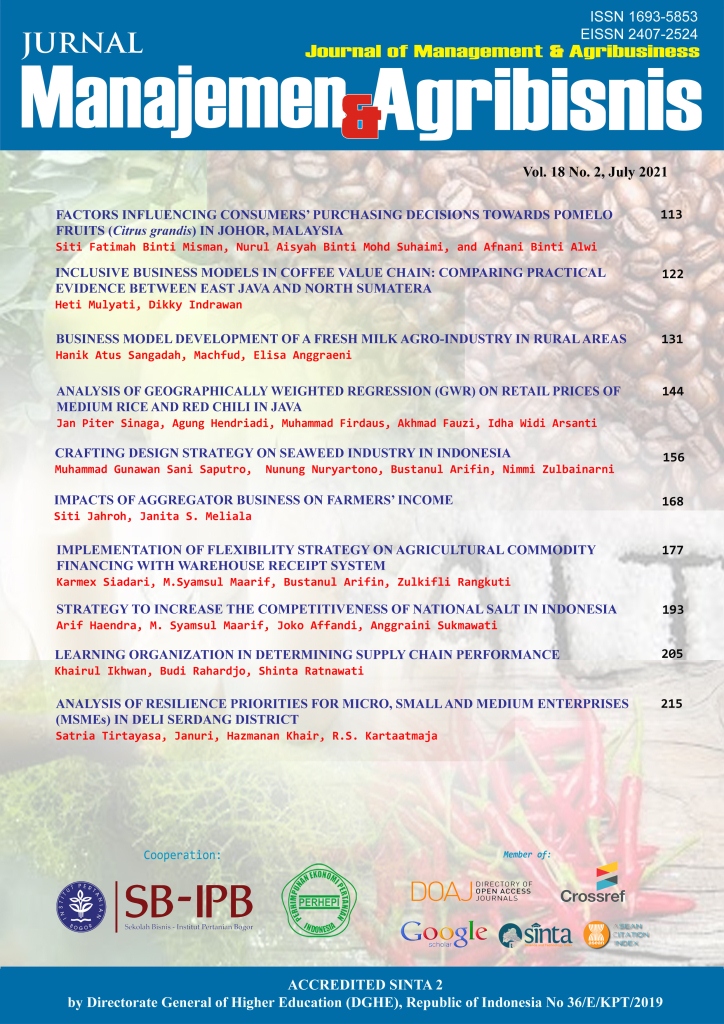Business Model Development of a Fresh Milk Agro-Industry in Rural Areas
Abstract
This research aims to identify several business models of fresh milk agro-industry that are emerging in rural areas, as well as factors that influence agro-industry development, and establish a dairy agro-industry business model framework. The case study method used in this research consists of an agro-industry with business models and cooperatives. According to the finding of this research, there are seven supporting factors that influence the growth of the fresh milk agro-industry in rural areas, that are; (1) organizational structure, (2) fresh milk handling operations, (3) technology application for production activities, (4) training of employees and breeders, (5) product marketing strategies, (6) product quality and quality assurance, (7) company actor’s innovation. These seven factors can be determined using the weight ratio to assess the value of each factor that influences the development of the fresh milk agro-industry in rural areas, namely business management (0.2641), raw material handling (0.1510), and quality assurance (0.1347). The importance of the decision is a crucial factor in the development of the dairy agro-industry in rural areas. In rural areas, the fresh milk agro-industry business model is a cooperative form of business, as well as a business model that incorporates both private and cooperative business practices. The more varied the business models examined, the stronger the fresh milk agro-industrial business model system would be. Since they help small-scale milk farmers in rural areas market their products, regional milk cooperatives are still the best business model to use.
Keywords: business model, BMC (Business Model Canvas), cross-case analysis, fresh milk agro-industry, multiple case study
Authors
Authors who publish with this journal agree to the following terms:
- Authors retain copyright and grant the journal right of first publication with the work simultaneously licensed under a Creative Commons Attribution License that allows others to share the work with an acknowledgement of the work's authorship and initial publication in this journal.
- Authors are able to enter into separate, additional contractual arrangements for the non-exclusive distribution of the journal's published version of the work (e.g., post it to an institutional repository or publish it in a book), with an acknowledgement of its initial publication in this journal.
- Authors are permitted and encouraged to post their work online (e.g., in institutional repositories or on their website) prior to and during the submission process, as it can lead to productive exchanges, as well as earlier and greater citation of published work (See The Effect of Open Access).

